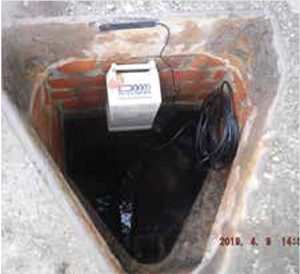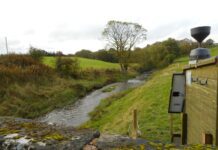
A UK water firm is evaluating methodologies to improve sewer network resilience by forecasting issues such as blockages and sewer flooding. The company provides 24/7 coverage of sewer network issues by means of actionable reports.
Detectronic is a framework contractor for a number of water companies in the UK. “We provide a fully managed service on large fleets of flow-, level- and rain-gauge monitoring equipment,” says the firm. “This includes installation, maintenance, data delivery and reports. Our datacentre provides a great service to the water companies, managing alarms and reporting issues in the sewer network.”
Using complex algorithms and machine learning, Detectronic, working with Royal Haskoning DHV, was recently awarded trial catchments to showcase its solution and sofware, called DetecAnalytics.
The objectives were: to deliver real-time alerts and high-level alarms 24 hours a day, 365 days a year; to reduce the number of false and unnecessary alarms, so only alarms needing action are raised; to reduce pollution incidents; and to improve self-reporting (and achieve ODIs).
The catchment being used for the trial is challenging says Detectronic, and has historically been problematic for the water company overseeing it. Using a combination of new and existing monitoring equipment, data is sent via GPRS to the DetecAnalytics platform. The instruments are set to dial out hourly and – when certain high levels are breached – to reduce the reaction time to any potential issue. DetecAnalytics updates the prediction on every data upload.
Establishing the typical site characteristics so only true alarms and alerts are raised is a priority, says the firm. This is seemingly achieved using machine learning to calculate the typical behaviour of the site under certain conditions (rainfall, changing river levels, tidal effects, and so on).
If real-time data deviates from the predicted bandwidth, an alert for further investigation is raised.
Factors in the sewer such as silt movement, sediment build-up and the general sewer condition up and down stream result in fluctuating flow patterns. To ensure only issues requiring intervention trigger alerts, conditions must also meet other criteria (e.g. a high level reading that exceeds a preset timeframe).
Results
The trained model is used to predict future values and confidence bands. The confidence bands are compared to the actual measured values. If the measured value deviates from the predicted value to such an extent that it falls outside the predicted bandwidth, it is detected as an anomaly. The anomalies are then classified to give an indication of RCA and rectification recommendations.
After 7 weeks data collection the firm expects prediction levels of >80% reliability. After 7 months it expects >95% prediction accuracy and after two full seasons it expects a prediction accuracy exceeding 98%.
Detectronic cites a number of benefits to water companies from using its service, including: Reducing pollution events autonomously (and achieving ODIs), reducing the number of problems found, and reducing the load on the data hub by reducing alarms to only actionable reports. The solution interfaces with SCADA, PLC and process databases. It provides holistic insight into wastewater transport.






